Пластиковые отходы - растущая проблема во всем мире. От упаковки до выброшенных бытовых предметов - пластик повсюду, и большая его часть попадает на свалки или в океан. Одним из наиболее эффективных способов утилизации этих отходов является их измельчение для переработки или повторного использования. Именно здесь на помощь приходят измельчители пластика.
Оборудование для измельчения пластика помогают разделить громоздкие пластиковые предметы на более мелкие, удобные для использования кусочки. Машины для измельчения пластика используются в центрах переработки, на заводах и даже малыми предприятиями или отдельными авторами, которые хотят повторно использовать пластик. Но при таком количестве моделей на рынке бывает трудно понять, какая из них подходит для ваших нужд.
Это руководство призвано помочь вам. Мы расскажем о различных типах измельчителей пластика, о том, на что следует обратить внимание перед покупкой, и выделим некоторые из лучших моделей 2025 года. Независимо от того, управляете ли вы крупным предприятием по переработке отходов или только начинаете, выбор правильного измельчителя пластика может значительно повысить эффективность и стоимость.

Что такое шредер для пластика и почему он важен?
Измельчитель пластика - это машина, предназначенная для резки пластика на мелкие кусочки. Он работает с помощью вращающихся ножей или кусачек, чтобы разрушить такие предметы, как бутылки, контейнеры, трубы и даже пленку или листовой материал. Измельченный пластик может быть переплавлен, сформован или переработан в зависимости от назначения.
Есть несколько причин, по которым использование шредера имеет смысл. Во-первых, он уменьшает размер пластиковых отходов, что облегчает их обработку и транспортировку. Во-вторых, он повышает качество и однородность перерабатываемых материалов. Более мелкие и однородные куски эффективнее перерабатывать на следующих этапах утилизации. Наконец, измельчение помогает предприятиям сэкономить деньги, поскольку пластик используется повторно, а не закупается как новое сырье.
Измельчители пластика используются в самых разных отраслях промышленности - от крупных заводов по переработке отходов до местных мастерских. Но не все шредеры одинаковы. Они различаются по конструкции, мощности и назначению. Выбор подходящего зависит от того, какой вид пластика вам нужно измельчить и с каким количеством материала вы работаете каждый день.
Ключевые факторы, которые следует учитывать перед покупкой измельчителя пластика
Выбор правильного измельчителя пластика - это не просто выбор самой большой или дорогой машины. Лучший шредер для вас зависит от того, для чего вы планируете его использовать, от типа пластика, с которым вы работаете, и от ваших ежедневных производственных потребностей. Вот несколько ключевых факторов, которые следует учитывать перед принятием решения.
1. Тип пластика и объем
Не все пластмассы одинаковы. Некоторые из них мягкие и гибкие, как пленка или пакеты. Другие - твердые и прочные, такие как трубы или толстые контейнеры. Разные шредеры предназначены для разных материалов. Если вы имеете дело с легкими изделиями, такими как бутылки из ПЭТ или тонкие листы, вам подойдет Одновальный измельчитель пластмасс или гранулятора для пластика может быть достаточно. Для более твердых пластиков вам может понадобиться двухвальный измельчитель с большей мощностью.
Также подумайте, сколько пластика вам нужно измельчить за день. Для небольших партий подойдет компактная машина. Вы можете купить небольшой измельчитель пластика на рынке или сделать простую версию в домашних условиях. Но если вы перерабатываете тонны материала, вам понадобится промышленный измельчитель пластика с высокой производительностью.
2. Желаемый размер выходного сигнала
Измельчители могут производить хлопья разного размера в зависимости от установки сита и ножей. В некоторых случаях требуются мелкие частицы для дальнейшей обработки, в то время как другие нуждаются только в базовом уменьшении размера для более удобного хранения. Убедитесь, что выбранный вами шредер обеспечивает гибкость в выборе размера выходной продукции или оснащен регулируемыми ситами.
3. Мощность и производительность двигателя
Двигатель - это сердце шредера. Более мощный двигатель означает, что машина для измельчения пластика может резать более твердые материалы и выдерживать большие нагрузки без перегрева. Обращайте внимание на промышленные измельчители пластика с номинальной мощностью двигателя в лошадиных силах или киловаттах и проверяйте, насколько двигатель эффективен и энергосберегающ.
4. Качество и обслуживание лезвий
Ножи - это то, что режет, поэтому их качество имеет большое значение. Ищите шредеры с лезвиями из закаленной стали или сплава, которые устойчивы к износу. Некоторые машины предлагают возможность легкой замены или заточки ножей, что позволяет сократить время простоя и упростить обслуживание.
Топ-6 моделей измельчителей пластика в 2025 году
1. Двухвальный измельчитель KAIFENG - Создан для работы с жесткими промышленными отходами и сложными материалами
Когда речь идет об измельчении твердых, объемных или нестандартных материалов, двухвальный шредер KAIFENG обеспечивает непревзойденную производительность. Разработанный для работы с любыми материалами, от пластика и резины до отработанных кабелей и промышленного лома, этот шредер использует два высокомоментных вала для эффективного измельчения материалов до приемлемых размеров. Прочная конструкция и гибкая конфигурация делают его лучшим выбором для тяжелых условий переработки и утилизации отходов.
Ключевые преимущества:
- Ножи из высокопрочной легированной стали и двухвальная режущая система обеспечивают мощное и эффективное измельчение прочных и негабаритных материалов.
- Модульная конструкция с удобным доступом к замене инструментов сводит к минимуму время простоя и упрощает текущее обслуживание.
- Настраиваемые параметры экрана позволяют пользователям регулировать размер выходного сигнала для различных последующих приложений.
Сценарии применения:
- Промышленные предприятия по переработке шин, кабелей или крупногабаритных пластиковых отходов.
- Заводы по переработке электронных отходов, требующие надежного измельчения приборов и компонентов.
- Производственные и логистические предприятия, управляющие большими объемами отходов производства или бракованных изделий.
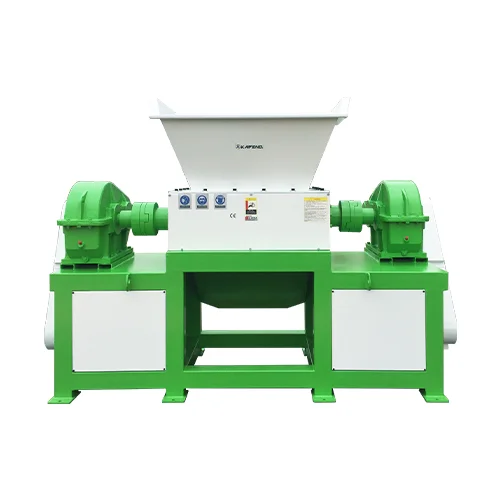
2. Измельчители пластика WEIMA серии WLK - долговечный выбор для промышленных сыпучих отходов
Серия WLK от WEIMA продолжает пользоваться популярностью на рынке крупногабаритных измельчителей пластика. Известная своей надежной конструкцией и стабильной работой под давлением, эта серия идеально подходит для компаний, которые ежедневно перерабатывают большие объемы жестких пластиковых материалов. Будь то автомобильный пластик, отходы после производства или упаковочные отходы, машины WLK рассчитаны на длительную эксплуатацию с минимальным временем простоя.
Ключевые преимущества:
- Предназначены для круглосуточной работы в промышленных условиях и требуют минимального обслуживания.
- Высокая стабильность конструкции, обеспечивающая бесперебойную работу даже при больших или неравномерных пластиковых нагрузках.
- Возможность индивидуальной настройки с использованием различных режущих и ситовых систем для конкретных потоков отходов.
Сценарии применения:
- Муниципальные центры по переработке крупных партий пластиковых отходов.
- Производственные предприятия, нуждающиеся в централизованном измельчении производственного лома.
- Предприятия по переработке отходов в энергию ищут надежное оборудование для предварительной обработки.
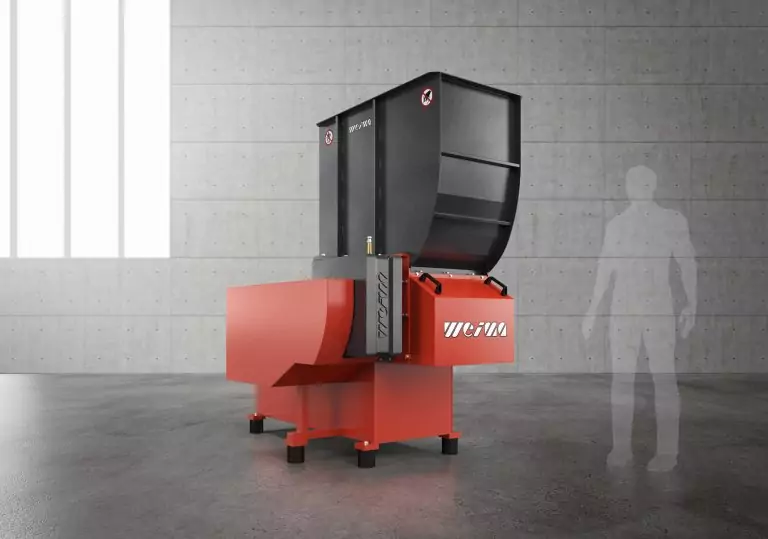
3. Измельчители пластмасс Vecoplan серии VAZ - универсальная платформа для смешанных пластмасс
Серия VAZ компании Vecoplan предлагает баланс адаптивности и эффективности, особенно хорошо подходящий для предприятий, работающих с различными типами пластика. Будь то мягкая пленка, формованные детали или многослойные материалы, машины VAZ обеспечивают гибкость при переходе от одного вида сырья к другому с минимальными изменениями в настройках.
Ключевые преимущества:
- Модульная конструкция позволяет создавать различные конфигурации, включая интеграцию конвейеров.
- Легкий доступ к ротору и режущей камере для быстрой очистки и замены ножей.
- В паре с дополнительными сепараторами можно перерабатывать пластик с металлическими примесями.
Сценарии применения:
- Средние предприятия, управляющие послепромышленными отходами с нескольких линий.
- Коммерческие предприятия по переработке принимают широкий спектр потребительской пластиковой упаковки.
- Логистические центры, перерабатывающие возвращенные пластиковые изделия и битые контейнеры.
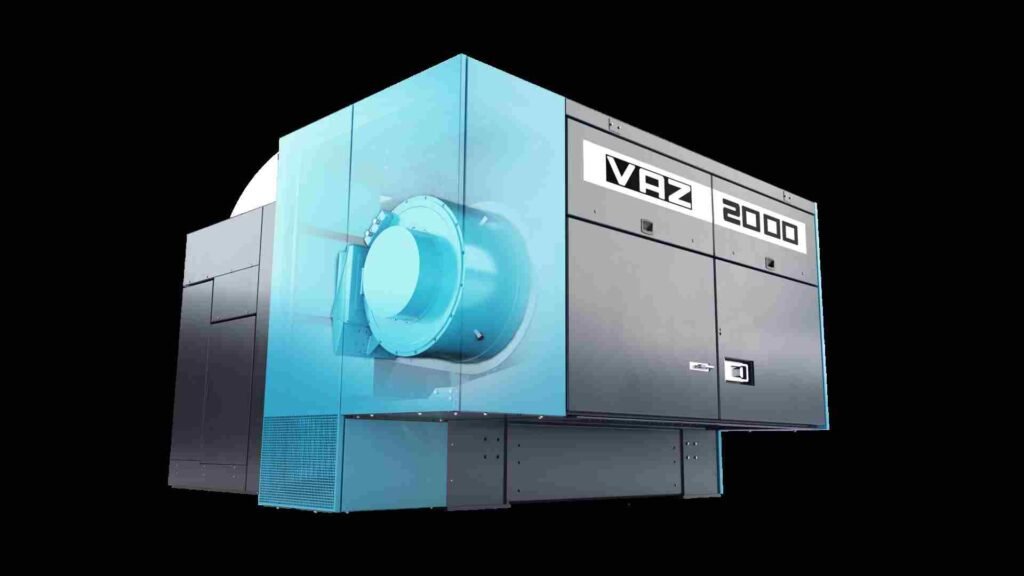
4. Измельчители пластика Zerma серии ZSS - специально для мягких пластиков и пленок
Когда речь идет об измельчении пленок, пакетов и гибких пластиков, серия Zerma ZSS выделяется на фоне остальных. Эти материалы часто вызывают засорение в стандартных шредерах, но серия ZSS разработана с учетом особенностей, которые уменьшают засорение и улучшают поток, что делает ее особенно эффективной при работе с легкими материалами в больших объемах.
Ключевые преимущества:
- Открытый бункер и конструкция ротора с защитой от закручивания сводят к минимуму застревания и обеспечивают пропускную способность материала.
- Возможность настройки для высокоскоростной обработки пленки или более медленных операций с высоким крутящим моментом.
- Легкая интеграция с грануляторами и воздушными конвейерами для создания комплексных решений.
Сценарии применения:
- Переработка сельскохозяйственной пленки и тепличного пластика.
- Переработка пакетов и мягкой упаковки в супермаркетах или торговых сетях.
- Производители упаковки, возвращающие излишки или бракованную пленочную продукцию
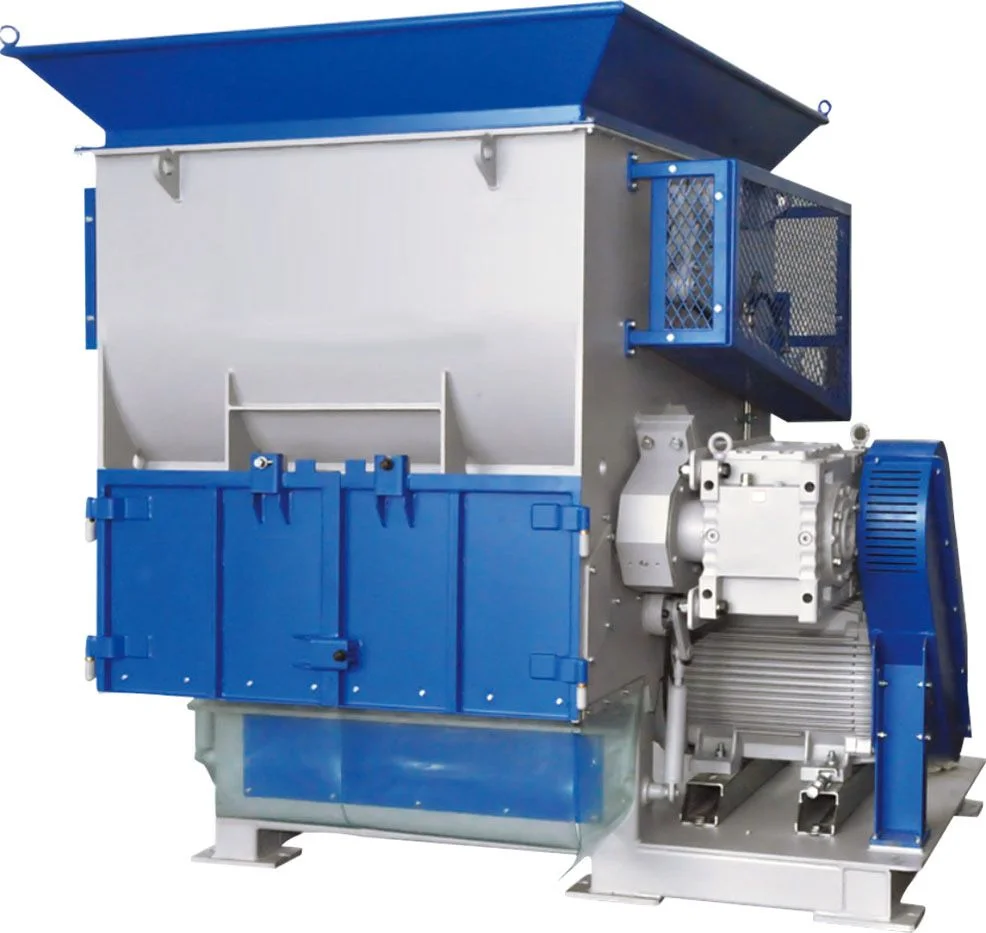
5. Измельчитель пластика Genox Vision Series - практичный и доступный для малого и среднего бизнеса
Для предприятий с небольшой пропускной способностью или ограниченным пространством серия Genox Vision представляет собой бюджетное, но в то же время эффективное решение для измельчения. Несмотря на то, что он не обладает грубой силой промышленных линий, качество сборки и стабильная производительность делают его лучшим выбором среди малых и средних предприятий.
Ключевые преимущества:
- Простая конструкция и интуитивно понятное управление сокращают время обучения оператора.
- Компактная конструкция позволяет легко устанавливать его на небольших предприятиях или в мастерских.
- Сильная экосистема поддержки с легкодоступными запчастями и технической помощью.
Сценарии применения:
- Заводы по производству пластмассовых изделий ежедневно управляют отходами производства.
- Местные предприятия по переработке пластика для бутылок и легкой упаковки.
- Мейкерспейсы и общественные центры переработки, поощряющие повторное использование пластика.

6. Измельчитель драгоценного пластика Pro - расширение возможностей инноваций на местах
Созданный в рамках инициативы Precious Plastic с открытым исходным кодом, Shredder Pro не является коммерческим гигантом, но именно в этом его смысл. Созданный для доступности и настройки, он дает возможность педагогам, дизайнерам и местным новаторам перерабатывать отходы в небольших масштабах.
Ключевые преимущества:
- Конструкция, поддерживаемая сообществом, с изменяемыми деталями и подробным руководством по сборке.
- Может использоваться отдельными лицами или командами с минимальным техническим образованием.
- Поощряет круговое дизайнерское мышление в школах, лабораториях мейкеров и мастерских.
Сценарии применения:
- Учебные заведения, реализующие программы по устойчивому развитию или материаловедению.
- Местные мастерские по переработке пластика, превращающие его в мебель, плитку или предметы искусства.
- Стартапы, разрабатывающие малоотходную продукцию с циркулярной экономикой.
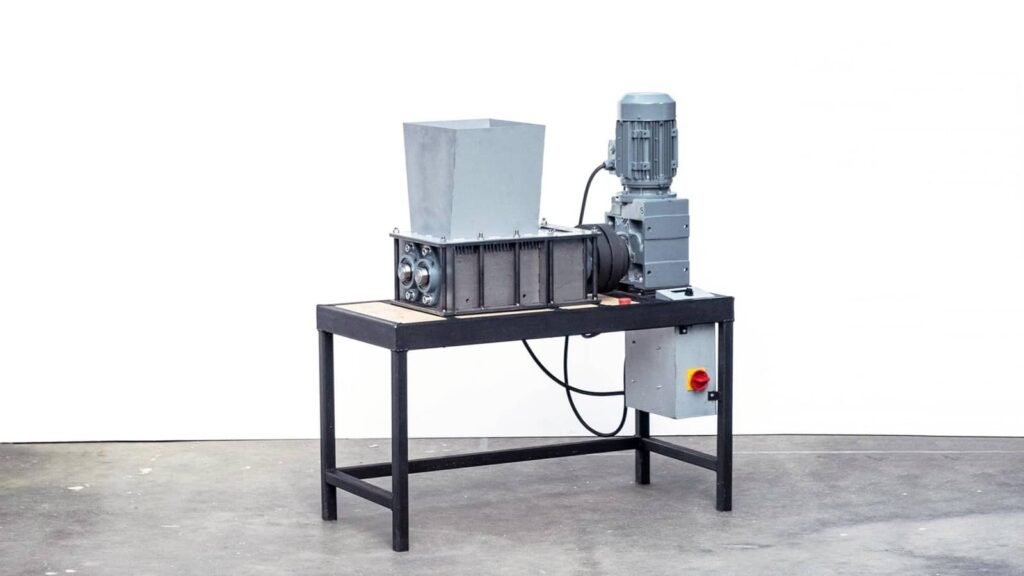
Советы по уходу
Шредер для измельчения пластика - это долгосрочная инвестиция, и, как и любое другое промышленное оборудование, он работает лучше всего при правильном обслуживании. Регулярное обслуживание не только продлевает срок службы оборудования, но и обеспечивает стабильное качество измельчения, снижает риск поломок и уменьшает потребление энергии. Ниже приведены основные правила технического обслуживания, которые должен соблюдать каждый оператор или команда технического обслуживания, чтобы поддерживать шредеры в идеальном состоянии.
1. Текущая очистка режущей камеры
Со временем в режущей камере могут скапливаться остатки пластика, пыль и загрязнения. Без регулярной очистки эти материалы могут затвердевать, мешать работе ротора и вызывать неравномерный износ ножей. Простой ежедневный или еженедельный график очистки - в зависимости от объема использования - может предотвратить накопление загрязнений. Использование сжатого воздуха и безопасных для пластика растворителей помогает поддерживать бесперебойную работу.
2. Следите за остротой и выравниванием лезвия
Ножи - это сердце любого измельчителя. Тупые или неправильно расположенные ножи увеличивают нагрузку на двигатель, снижают производительность и приводят к неравномерному размеру частиц. Операторы должны проводить визуальный осмотр на предмет зазубрин, искривления или затупленных краев. В зависимости от типа материала и ежедневной продолжительности работы ножи могут нуждаться в заточке или замене каждые несколько месяцев. Наличие запасных частей может сократить время простоя.
3. Смазка движущихся компонентов
Подшипники, валы и цепи должны быть правильно смазаны, чтобы избежать повреждений от трения. Большинство промышленных измельчителей пластика имеют специальные точки смазки, и использование правильного сорта смазочного материала имеет большое значение. Следует избегать чрезмерного смазывания, так как оно может притягивать пластиковую пыль и приводить к заеданию или засорам. Всегда соблюдайте указанные производителем интервалы и спецификации смазки.
4. Проверьте наличие вибрации или необычных шумов
Повышенная вибрация или шум часто являются признаком несоосности, изношенности подшипников или несбалансированности роторов. Эти проблемы, если их игнорировать, могут привести к дорогостоящим механическим поломкам. Еженедельная проверка с использованием инструментов для анализа вибрации или даже простые ручные проверки помогут обнаружить проблемы на ранней стадии. Никогда не работайте с машиной при наличии ненормальных звуков.
5. Осмотрите электрические соединения и элементы управления
Электрические неисправности могут остановить производство и повредить критически важные компоненты. Регулярно проверяйте наличие свободной проводки, износ панелей управления и правильность заземления. Многие современные измельчители пластика оснащены диагностическими индикаторами - их не следует игнорировать. Любая аномалия в нагрузке двигателя, температуре или логике управления должна быть зарегистрирована и оперативно устранена.
6. Ведите учет и планируйте профилактическое обслуживание
Успешное техническое обслуживание является проактивным, а не реактивным. Ведение подробного журнала технического обслуживания помогает выявить тенденции износа и спланировать профилактическое обслуживание. Многие предприятия теперь используют цифровые журналы или простые электронные таблицы для отслеживания чистки, смазки, замены лезвий и ремонтных работ. Плановые простои для осмотра и обслуживания более эффективны, чем экстренные ремонты во время пиковых нагрузок.
Заключение
Измельчители пластика стали важнейшим инструментом в борьбе с глобальным кризисом пластиковых отходов. Независимо от того, работаете ли вы на промышленном предприятии, управляете средним центром переработки или начинаете инициативу на местах, правильно подобранное оборудование может значительно улучшить рабочий процесс, снизить затраты и поддержать цели устойчивого развития. Лучшие модели 2025 года предлагают целый ряд решений - от высокопроизводительных дробилок, таких как двухвальный шредер KAIFENG, до адаптируемых систем, таких как серия Vecoplan VAZ. При выборе следует руководствоваться такими ключевыми факторами, как тип материала, объем выпускаемой продукции, потребности в обслуживании и энергоэффективность. Эти измельчители пластика - не просто машины, они представляют собой шаг к более разумному управлению отходами. При продуманных инвестициях и надлежащем обслуживании они помогают предприятиям выполнять как экономические, так и экологические обязательства в быстро меняющемся мире.
ЧАСТО ЗАДАВАЕМЫЕ ВОПРОСЫ
Какой тип измельчителя пластика лучше всего подходит для высокопроизводительных промышленных применений?
Для крупных предприятий, работающих с жесткими или крупногабаритными пластиковыми отходами, рекомендуется использовать двухвальные измельчители. Эти модели рассчитаны на непрерывную работу, высокий крутящий момент и минимальное техническое обслуживание - идеальное решение для централизованных линий переработки отходов или предварительной обработки в системах переработки отходов в энергию.
Как выбрать подходящий измельчитель пластика в зависимости от исходного материала?
Чтобы выбрать подходящий измельчитель пластика, начните с определения типа перерабатываемого пластика - мягкой пленки, жестких контейнеров или многослойного материала. Учитывайте объем, толщину и наличие в пластике таких загрязнений, как металл или этикетки. Эти факторы повлияют на требуемый крутящий момент, конфигурацию ножей и размер экрана. Соответствие режущей системы машины свойствам материала обеспечивает эффективную работу и минимизирует износ или засорение.
Какого графика технического обслуживания следует придерживаться моей команде для обеспечения оптимального времени работы?
Регулярное обслуживание измельчителей пластмасс включает ежедневную очистку, проверку и заточку ножей, смазку движущихся частей и еженедельную проверку вибрации/шума. Предприятиям следует вести журнал профилактического обслуживания, в идеале интегрированный в систему управления цифровыми активами для отслеживания аудита и анализа стоимости жизненного цикла измельчителей пластмасс.
